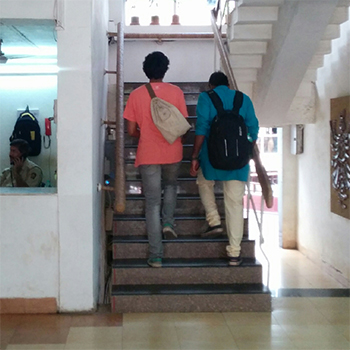Irshath Ahamed is a design innovator with an eccentric approach. He received his M.Des in Industrial Design from IDC (IIT Bombay) in 2017. Prior to that, he did his Bachelor of Architecture at the National Institute of Technology, Tiruchirappalli. Currently, he is working as a senior interaction designer at GE HealthCare since 2019. His previous work experiences are as follows: Architectural Intern at Rayan Ibrahim Architects Private Limited (2014), Freelance Architect at SR Constructions (2013–2015), Design Researcher at Imaginarium (2016–2018), Senior Industrial Designer at HCL Tech (2017–2019).




